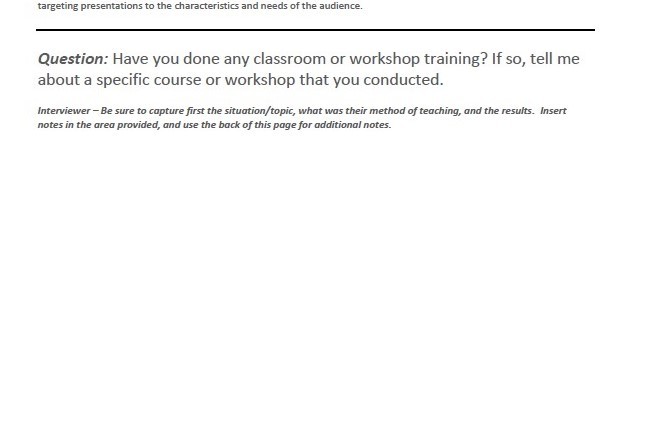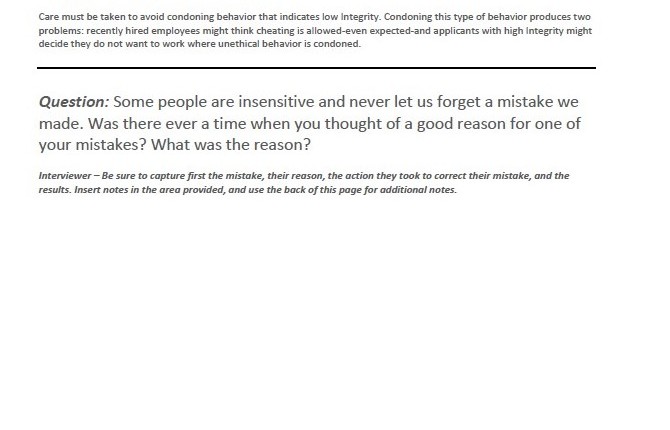Strategic Leadership
This competency comprises dimensions supporting an employee’s ability to adapt to an ever-changing work atmosphere. The dimensions and interview questions for Adaptability to Change include those involved with changes internally with colleagues and administration, as well as externally with clients. Adaptability to Change is an important skill for an effective employee at any company.
Dimensions Associated With Strategic Leadership
Click through the sample dimensions below to see actual interview questions associated with each dimension for this competency.
Decisiveness
Making timely decisions, rendering judgments, taking action when appropriate, and committing to a side or position.
Developing Organizational Talent
Developing subordinates’ skills and competencies by planning effective development activities related to current and future jobs.
Independence
Taking actions in which the dominant influence is one’s own convictions rather than the influence of others’ opinions and reactions.
Integrity
It involves maintaining and promoting social, ethical, and organizational norms in conducting internal and external business activities.
Judgement (Problem Solution)
Committing to an action after developing alternative courses of action that are based on logical assumptions and factual information and that take into consideration resources, constraints, and organizational values.
Oral Presentation
Presenting ideas effectively to individuals or groups when given time for preparation (including nonverbal communication and use of visual aids); targeting presentations to the characteristics and needs of the audience.
Risk Taking
Initiating action that involves a deliberate attempt to achieve a recognized benefit or advantage when potential negative consequences are understood.
Strategic Planning (Long Range Planning)
Establishing a course of action to accomplish a long-range goal or vision; allocating resources-human, material, financial; defining intermediate goals and contingencies.
Visionary Leadership
Creating a desired future state through helping others see, and emotionally feel how things can be different (and better).
Written Communication
Expressing ideas clearly in memoranda and letters that have appropriate organization and structure, correct grammar, and language and terminology adjusted to the characteristics and needs of the audience.













